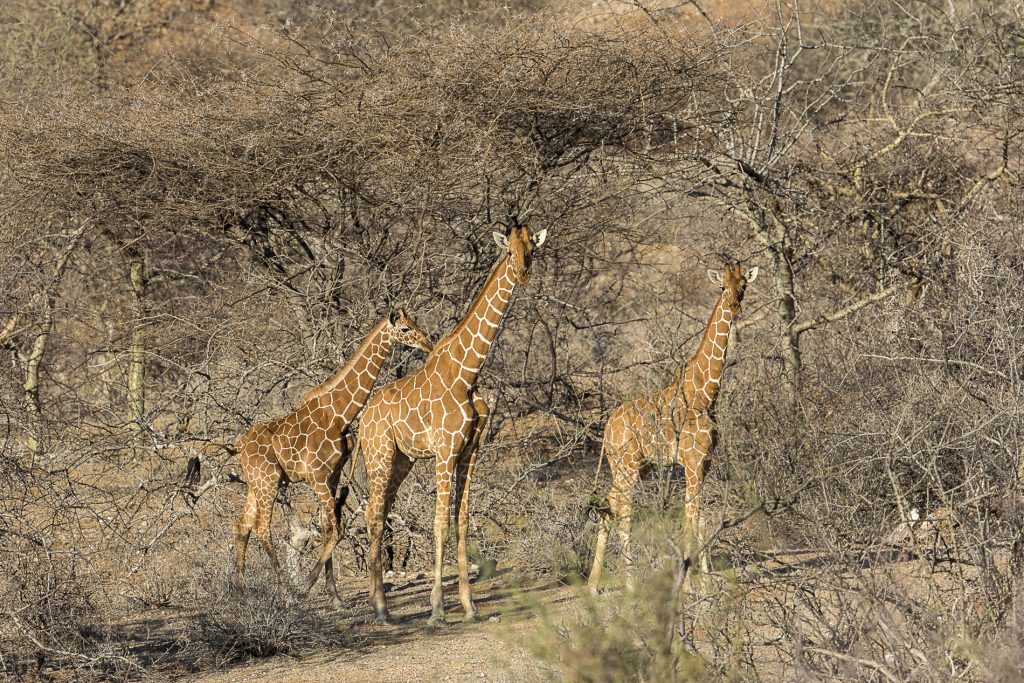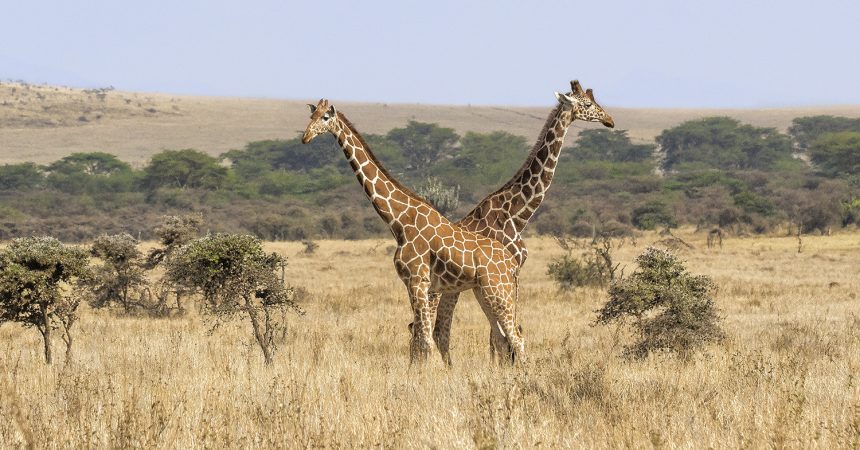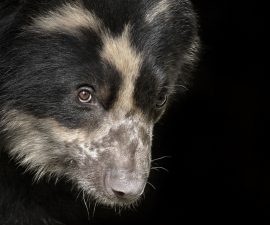Giraffes are icons of Africa, found nowhere else on Earth. Unique, magnificent, and much loved worldwide, they are also integral to their ecosystems, opening habitat for other wildlife and livestock and dispersing seeds for new plant growth. Yet when compared to other well known species, surprisingly we don’t know much about giraffes and how they live in their native habitat.
One thing we do know is that giraffes are in trouble. Their populations have declined across Africa, leading the IUCN Red List in December 2016 to officially list giraffes as “Vulnerable” to extinction. In northern Kenya, we’re working with the Twiga Walinzi (which means “Giraffe Guards” in Swahili), who are conducting field research to study reticulated giraffes Giraffa camelopardalis reticulata. Current estimates show that the population of this subspecies has declined by over 70 percent in the past 20 years—from 36,000 to less than 9,000 today. The main drivers behind the decline appear to be habitat loss and fragmentation, land degradation, and poaching.
WATCH AND LEARN
Imagine what we could learn about giraffes just by watching them in their habitat. One way to do just that is with the help of motion-activated trail cameras, which automatically take photos of animals as they pass by. The Twiga Walinzi has set up 100 of these cameras at two sites in northern Kenya: the 56,000-acre Loisaba Conservancy, and the 800,000-acre Namunyak Community Conservancy. Anything that moves activates the camera, so the photos also help track other animals as well as giraffes, to understand what species share the habitat. What we learn will help us to better understand giraffe ecology and to inform conservation efforts on the ground.

PEOPLE-POWERED RESEARCH
We have tens of thousands of photos to sort through, and only a few researchers. That’s where you come in—we need help identifying and counting wildlife in the photos. You don’t need specialized training or equipment. All you need is Internet access on any device, and you can join hundreds of volunteers from all around the world, thanks to an innovative internet platform called Zooniverse. On the site, hundreds of thousands of people around the world log in to assist professional researchers in a variety of projects. Our project, called “Wildwatch Kenya,” goes live on Zooniverse on June 19, 2017.
READY TO HELP?
Go to “Wildwatch Kenya.” We’re hoping this exciting, citizen-science project is the first step in providing a sustainable future for giraffes, and your contributions will make a huge difference. Thank you for joining our team to help save giraffes!
Find out more about how we’re helping to save the reticulated giraffe.
Read San Diego Zoo Institute for Conservation researcher David O’Connor’s blog entries, Defending the Towers and Giraffes in Jeopardy.
Read San Diego Zoo Institute for Conservation researcher Symon Masiaine’s blog entry, Symon Says: Let’s Save Wildlife.
Donna Parham is a content specialist for San Diego Zoo Global. Read her previous blog, 10 Things You Might Not Know About Penguins.





